Here’s one reason the Field Museum might have jacked up its admission in recent years: it spent $8.3 million in 1997 to acquire the fossilized remains of the T. rex nicknamed Sue. Or at least part of that hefty figure, since other organizations, corporations and HNWIs also chipped in, I understand.
From 2000 to 2018, Sue stood in Stanley Field Hall. Mostly bones, but also a number of replacement replicas for a few missing ones. Even so, the museum and other sources call Sue the most complete T. rex ever discovered, at about 90 percent.
These days, Sue has her — his — gender actually uncertain, so its — own room in the Griffin Halls of Evolving Planet, a multi-room exhibit about the evolution of life on Earth, complete with various fossils to illustrate various periods. Naturally, most of the crowds gravitate to the dinosaur bones, and not just Sue, but the creatures in the large Elizabeth Morse Genius Hall of Dinosaurs, which you reach before you get to the T. rex room.
Lots of impressive fossils there. Such as a triceratops. Can’t very well have a dinosaur collection without one of those.
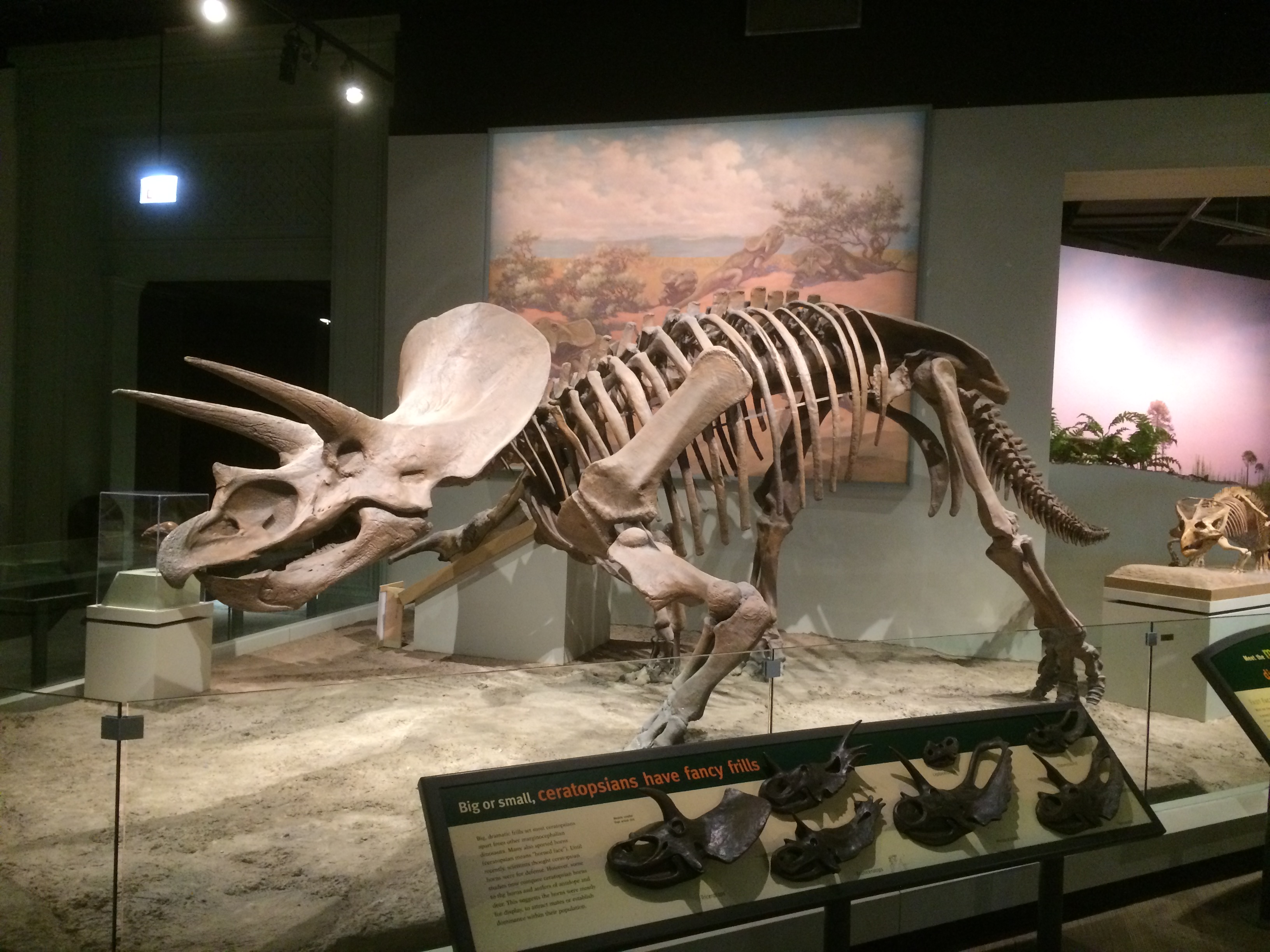 Or an apatosaurus.
Or an apatosaurus.
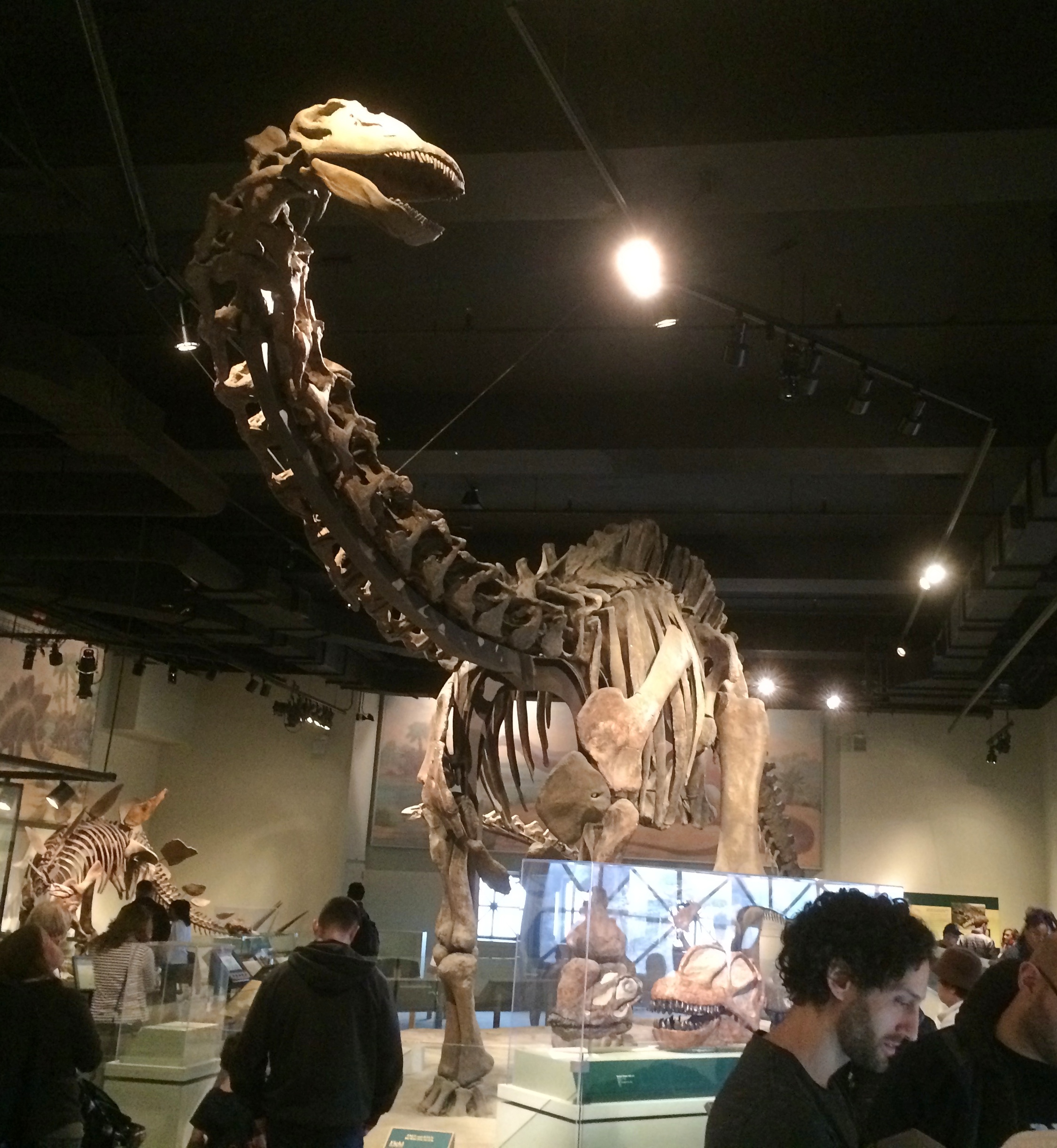 Or a stegosaurus.
Or a stegosaurus.
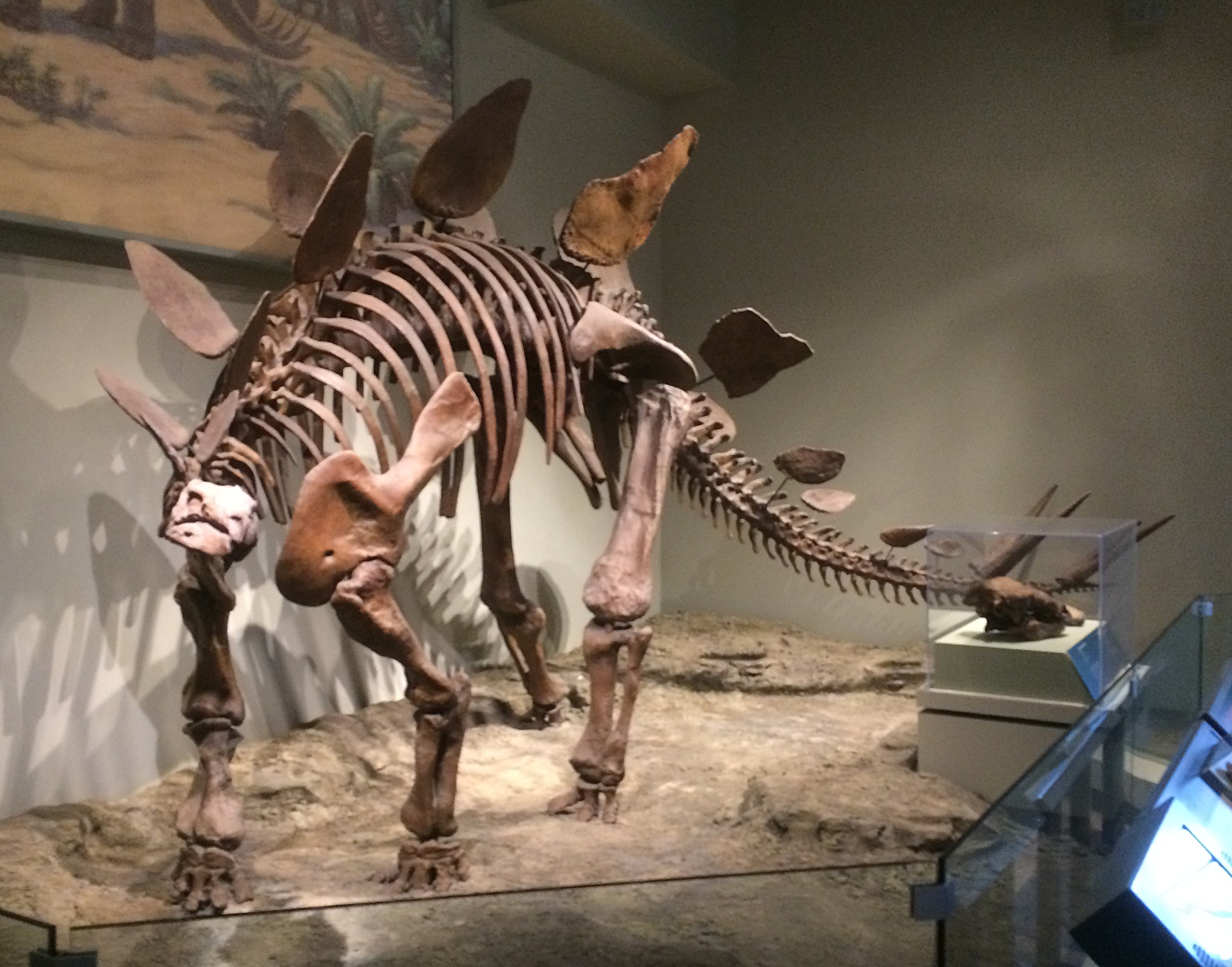 Sue not only has its own room, there’s narration and a minor light show as the narrator describes different parts of the beast, the better for the audience to ooh and aah.
Sue not only has its own room, there’s narration and a minor light show as the narrator describes different parts of the beast, the better for the audience to ooh and aah.
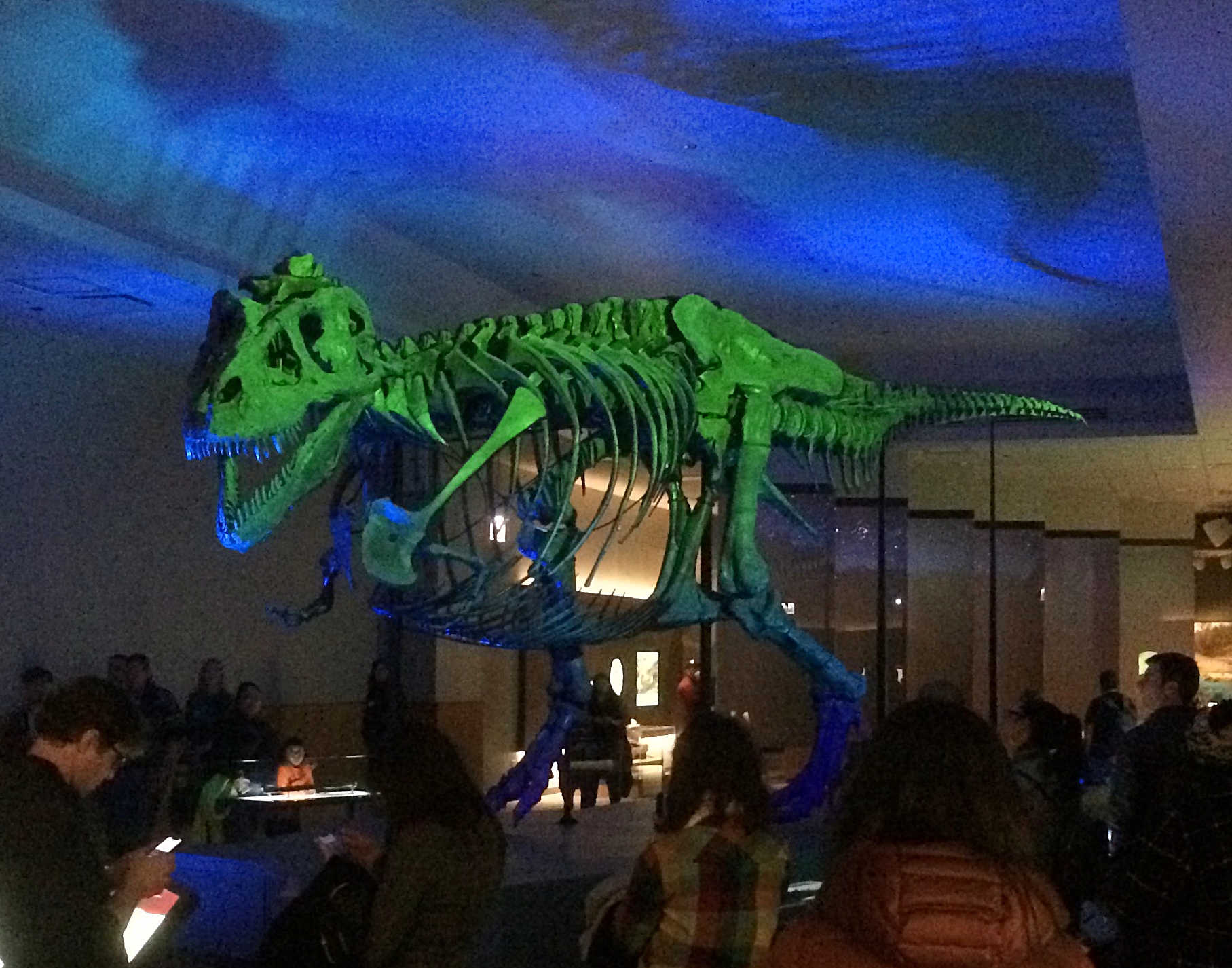
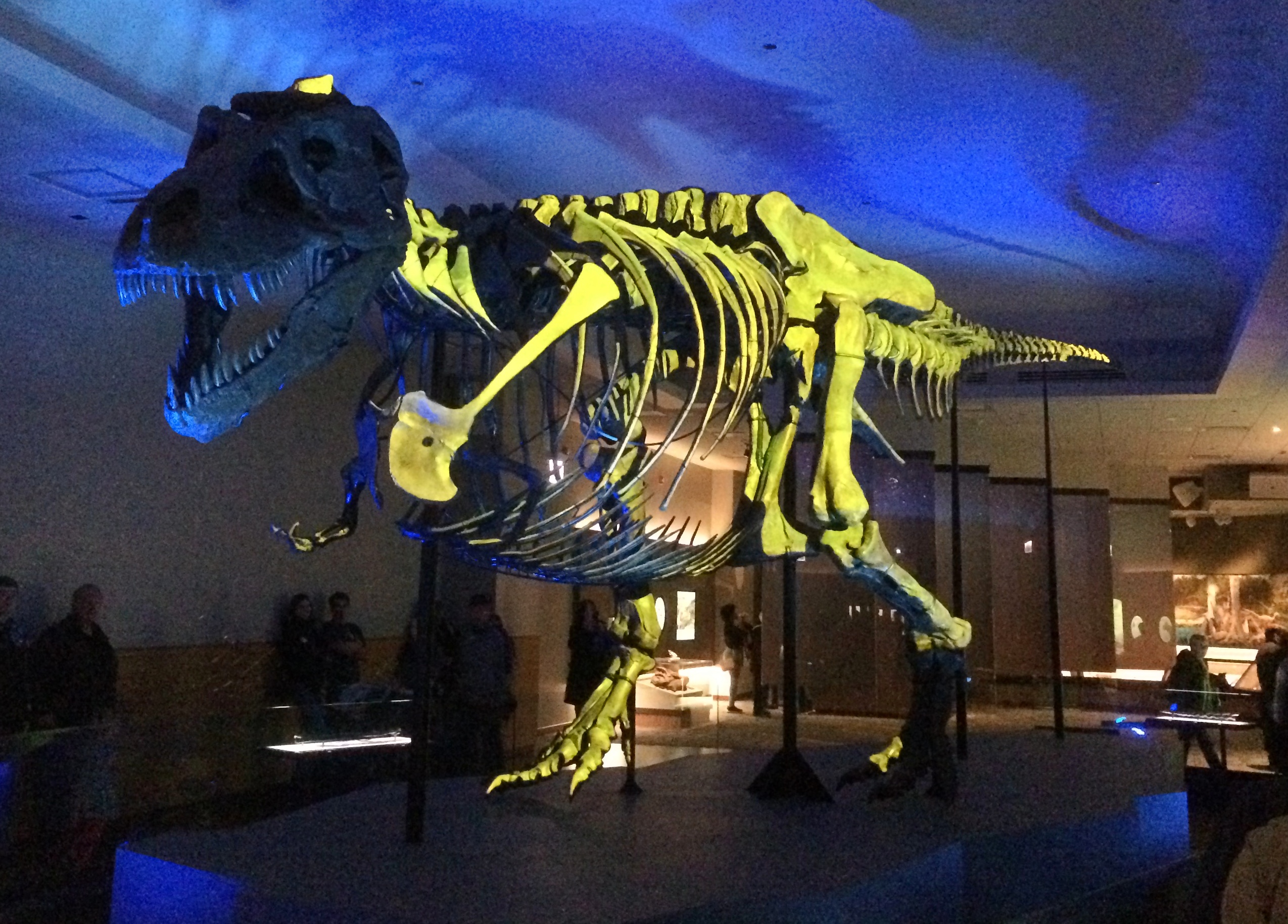 The head mounted on the rest of the skeleton is actually a replica. Sue’s head is kept in a separate box.
The head mounted on the rest of the skeleton is actually a replica. Sue’s head is kept in a separate box.
 If I remember right, that’s the way it was when Sue was in Stanley Field Hall.
If I remember right, that’s the way it was when Sue was in Stanley Field Hall.
Sue isn’t the last of the fossil parade. Time marches on, a meteor kills the dinosaurs, and mammals increase in size. This fellow looks pretty large, even for a bear.
 Known as Arctodus, or a short-face bear, it lived in Pleistocene North America but vanished about 11,600 years ago.
Known as Arctodus, or a short-face bear, it lived in Pleistocene North America but vanished about 11,600 years ago.
An Irish Elk.
 How did they hold their heads up? Strong neck muscles, I guess. More subtle minds than mine have taken up that very question. Amusingly, Stephen Jay Gould wrote, “The Irish Elk, like the Holy Roman Empire, is misnamed in all its attributes: it is neither exclusively Irish nor an elk.”
How did they hold their heads up? Strong neck muscles, I guess. More subtle minds than mine have taken up that very question. Amusingly, Stephen Jay Gould wrote, “The Irish Elk, like the Holy Roman Empire, is misnamed in all its attributes: it is neither exclusively Irish nor an elk.”
A mastodon.
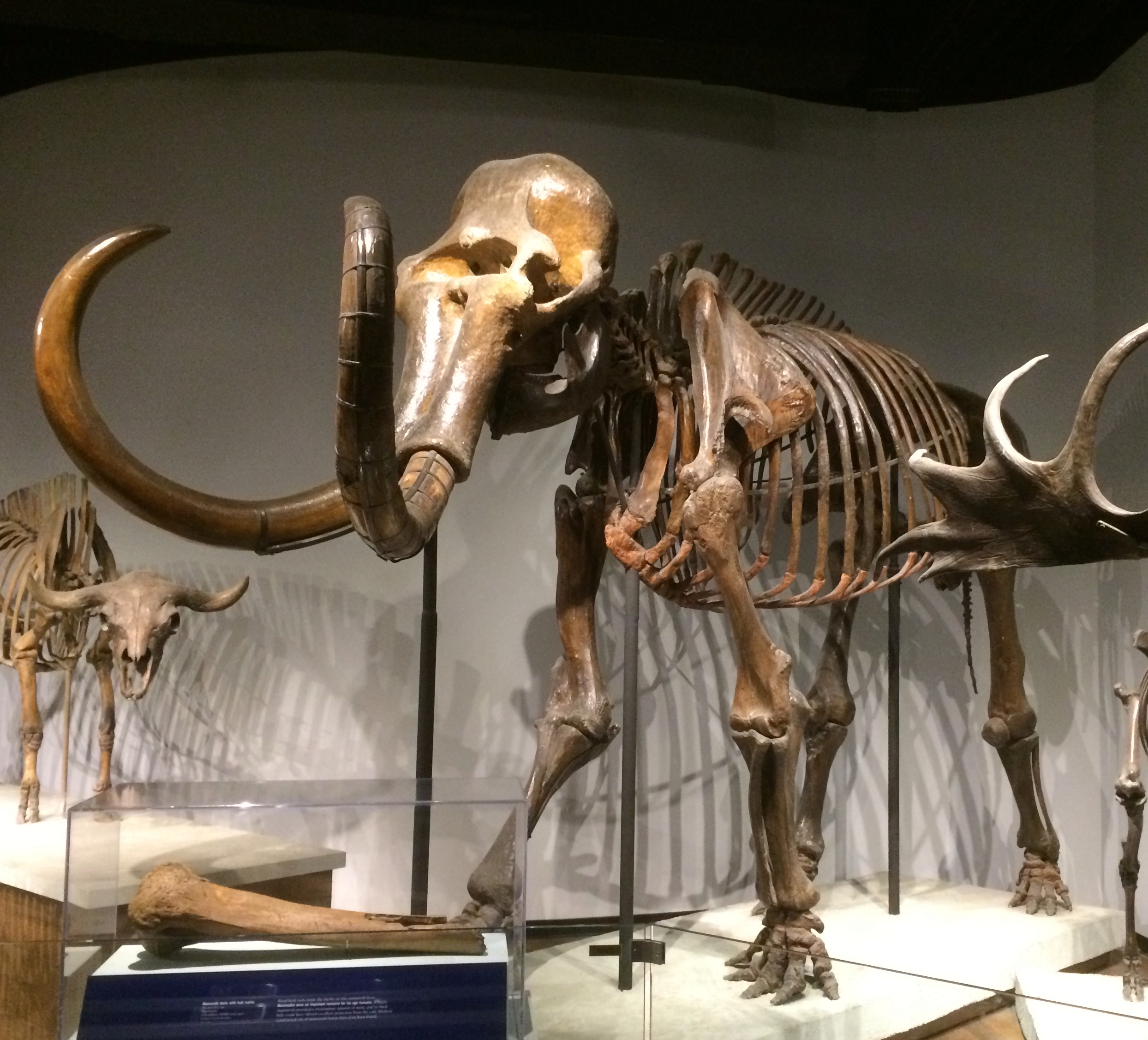 They are all examples of animals that didn’t survive the most recent Ice Age unless, as Gould mentions, Irish Elk survived into historic times. Just goes to show that no matter how tough you are, along comes a little climate change or hunters with pointy sticks and soon all that’s left is your bones, if that.
They are all examples of animals that didn’t survive the most recent Ice Age unless, as Gould mentions, Irish Elk survived into historic times. Just goes to show that no matter how tough you are, along comes a little climate change or hunters with pointy sticks and soon all that’s left is your bones, if that.